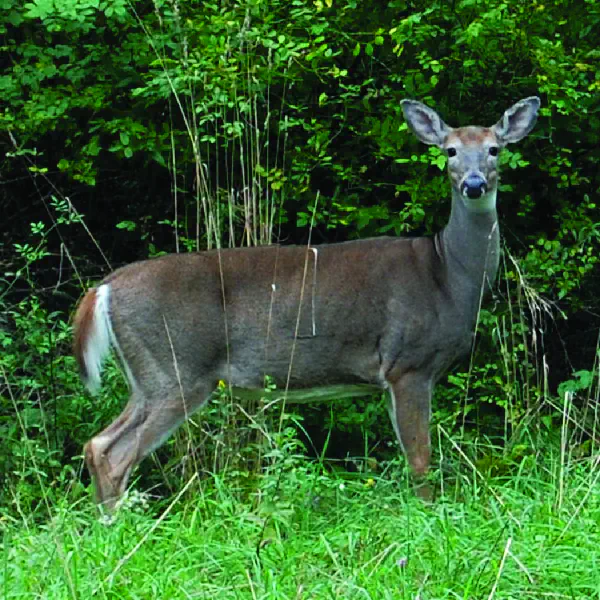Odocoileus virginianus
Table of Contents

Scientific Classification
| Kingdom: Animalia |
| Phylum: Chordata |
| Class: Mammalia |
| Order: Artiodactyla |
| Family: Cervidae |
| Genus: Odocoileus |
| Species: Odocoileus virginianus |
Conservation Status
Identifying Features
White-tailed deer are 50-80" in length, a brown-red to grey in color with a white belly, and the bottom of the tail has a distinct white color when running.
Their tracks are 2-3" long with a two-toed hoof.
Fawns are spotted when born and lose their spots as they reach maturity.
Male deer have antlers that are shed each year in the winter, after breeding season.
Habitat & Range
White-tailed deer are common throughout much of North and Central America in woodland, swamps, and open areas.
Behavior
Twigs, shrubs, acorns, grass, and even fungi make up the white-tailed deer’s diet.
Life Cycle
Breeding season, also known as the rut, occurs in late fall to early winter. Fawns, or young deer, are born in the spring. They are born with spots on their coats that help them camouflage in tall grass and shrubs to hide from predators. After 3-4 weeks young will follow their mothers more and begin eating some vegitation. By fall, they lose their spots and by a year and a half they reach maturity.
White-tailed deer can live over 20 years, but most often live closer to 10. They can be accurately aged by observing the wear on their molars.
Featured image by James Dake.

